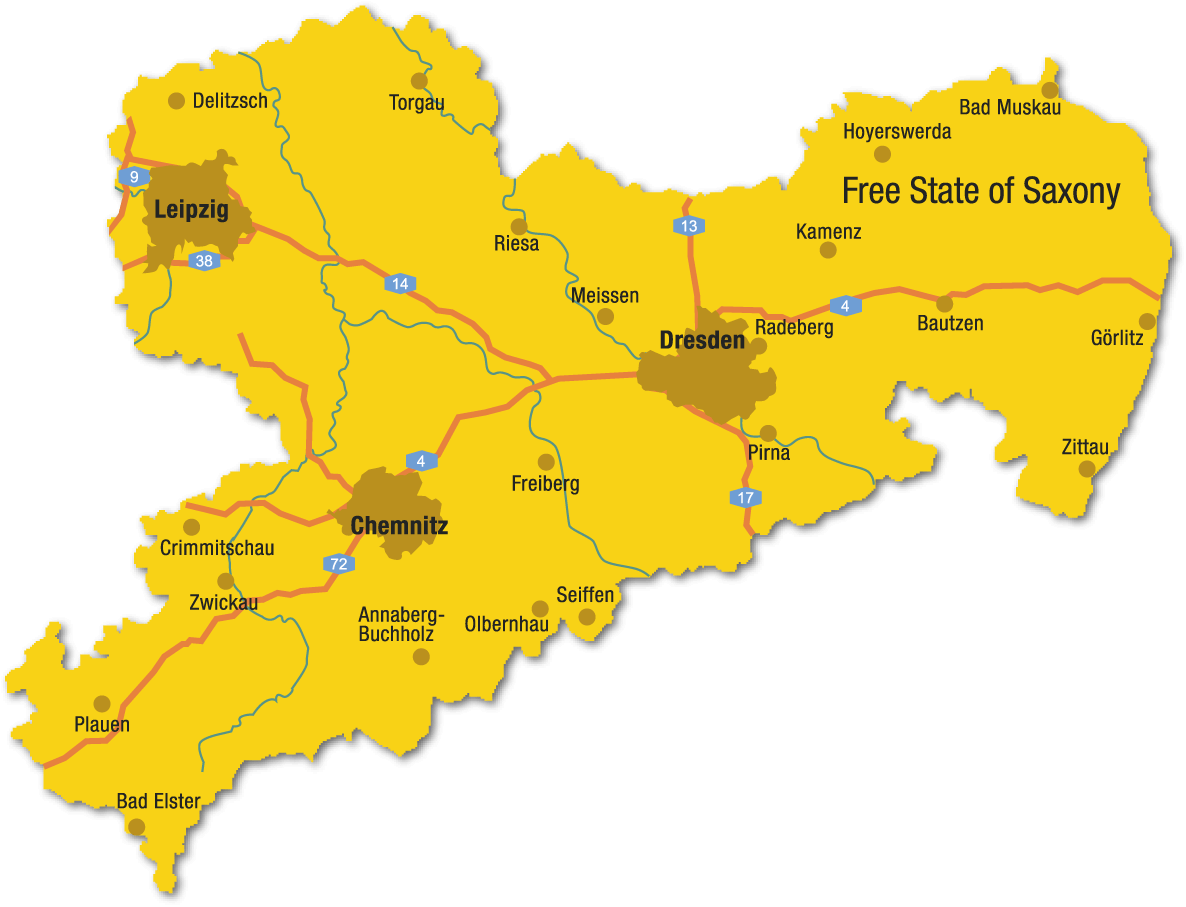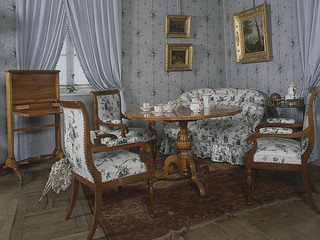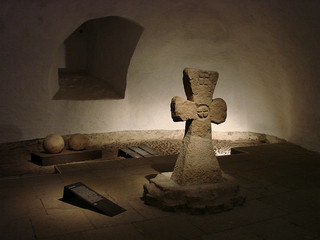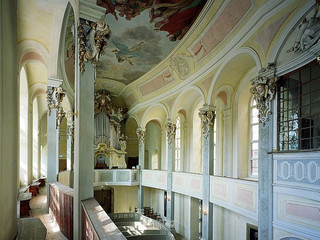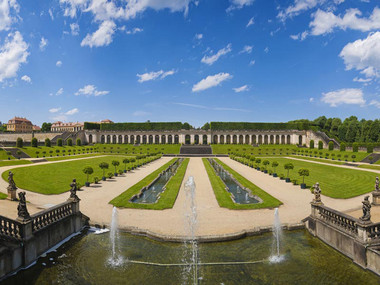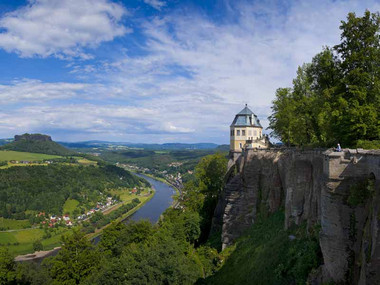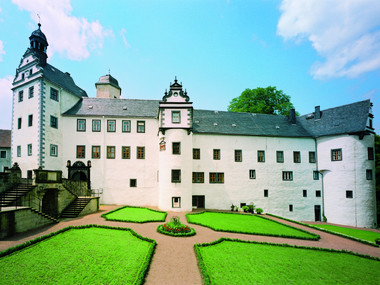The Castle Museum
Banquet hall architecture in the attic, the stables on the fifth floor, the cellar vaults below, and yet another floor down the grand residential rooms – concerning architecture at Weesenstein Castle, everything seems to be upside down because the building emerged from the top downward. The foundation of the castle tower, the oldest part of Weesenstein, is situated five floors above the Classicist conservatory built in later. Today, the permanent exhibition invites you to travel through the Saxon past but, consequentially, in inverse order. The way to the Middle Ages leads to the top.
The Lower Castle: Princely Residential Quarters of the 18th and 19th Centuries
The two-winged castle, built during the Renaissance and reshaped during the Baroque, houses the grand living rooms. The representation rooms of cultural and historical importance and richly equipped with original furniture, decorative accessories and, first of all, precious historical tapestries are unrivalled, even beyond Saxony’s borders. Also, the Catholic chapel that King John had built in after 1850 is remarkable. In the lower part of the castle you can find out what life and living of the Saxon royals felt like in the 19th century.
The Castle: Weesenstein’s Early History
From the Lower Palace and via a stairway, you will reach the »cellar« of the previous castle. Dark and well-fortified rooms surrounded by thick walls will tell you about the early history of Weesenstein Castle and its first owners – the burgraves of Dohna. The exhibition also illustrates the history of the von Buenau family. Based on many exhibits shown in authentic places, you can see how the von Buenaus shaped the cultural landscape of Saxony and Bohemia. Here you can also have an impression of the gentry’s way of living and working during the Renaissance and the Baroque.
The Protestant-Lutheran Castle Chapel: Baroque Splendor
The Baroque Castle Chapel represents the architectural and cultural highlight in the entire complex. As desired by the von Buenau family, the new representative church building, solemnly consecrated in 1741, replaced a small Gothic chapel. Its builder was Johann George Schmidt, apprentice and successor to the builder of the Dresden Church of Our Lady, George Baehr.
Originally, the chapel was home of a small castle congregation and was also open to Protestant visitors. King John of Saxony, who, around 1850, had a small Catholic chapel installed for himself in the former washhouse, opened the Castle Chapel in 1870 to the Weesenstein villagers as a parish church. Today, the Castle Chapel belongs to the Burkhardswalde Parish. Devotions and concerts are held there on a regular basis.
Admission & opening hours
Admission:
- Full rate 8,00 EUR
- Reduced rate 7,00 EUR
Opening hours
Subject to modifications.
Contact
Weesenstein Castle
Museumsladen
Am Schloßberg 1 | 01809 Müglitztal
Property of State Palaces, Castles and Gardens of Saxony, non profit
+49 (0) 35027 626-0
weesenstein@schloesserland-sachsen.de
